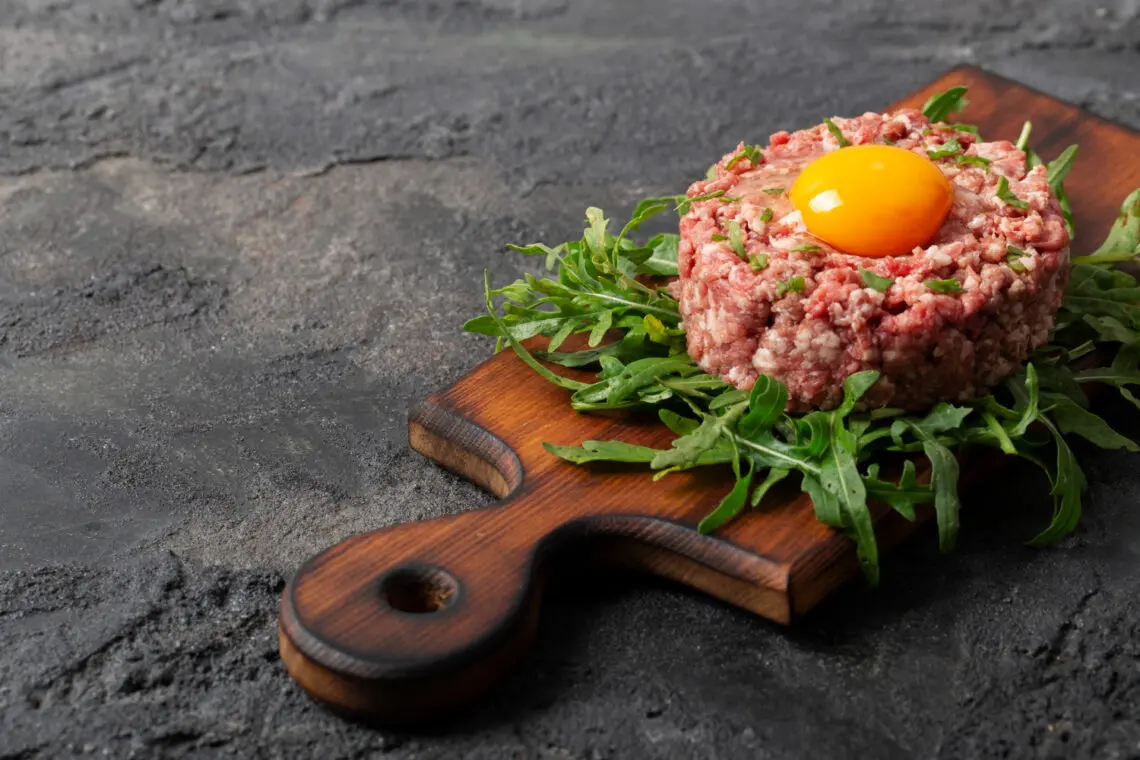From Surviving to Thriving: The Evolutionary Mindset Shift
Before we dive into the practical steps, you need to understand what you’re really doing here.
You’re not just “switching pet foods.”
You’re implementing evolutionary nutrition—the revolutionary concept that the diet your pet evolved to eat over millions of years is the optimal way to feed them. This isn’t a trend or fad; it’s a return to biological reality.
The Core Philosophy: BARF Isn’t a Product, It’s a Principle
BARF (Biologically Appropriate Raw Food) isn’t about buying specific products or following rigid recipes. It’s a simple philosophy that adopts the basic concept of biologically species-appropriate raw diets.
Here’s what BARF actually means:
- Biologically appropriate: Matching your pet’s evolutionary needs
- Species-appropriate: Right for carnivores, not herbivores
- Raw food: Unprocessed, living nutrition
- Flexible approach: Mimics, doesn’t duplicate, ancestral diets
Critical understanding: We’re not trying to return our pets to nature. Wild conditions included starvation, predator attacks, disease, and parasites. What we want is a diet and environment that maximizes health—moving from merely surviving to thriving.
Understanding the Two Transition Approaches
Immediate Switch (Cold Turkey)
Best for: Healthy adult dogs and cats with robust digestive systems Timeline: Day 1 – completely raw Success rate: High when done properly
Gradual Transition
Best for: Senior pets, those with sensitive digestion, or pets on medications Timeline: 7-14 days with progressive ratios Success rate: Very high, fewer digestive upsets
The Immediate Switch Method
Why this often works better: Your pet’s digestive system is designed for raw food. The enzymes, stomach acid, and bacterial populations needed for raw digestion can activate quickly when given species-appropriate nutrition.
Day 1 Preparation:
- Fast your pet for 12-24 hours (adult dogs) or 6-12 hours (cats)
- Allows digestive system to reset
- Clears processed food residue
- Increases appetite for new food
- Choose high-quality, complete raw meals from reputable manufacturers
- Look for frozen raw foods from registered suppliers
- Avoid “transitional” or “lightly cooked” products
- Start with single-protein sources (chicken or beef)
- Calculate appropriate portions:
- Adult dogs: 2-3% of body weight daily
- Puppies: 5-10% of body weight daily
- Cats: 4-6% of body weight daily
- Divide into 2 meals (adult) or 3-4 meals (puppies/kittens)
What to Expect:
- First few days: Smaller, firmer stools (normal detox response)
- Week 1: Increased water consumption as body rehydrates
- Week 2-3: Noticeably improved coat condition
- Month 1: Increased energy, better breath, cleaner teeth
The Gradual Transition Method
If you must go gradual (veterinary advice or very sensitive pet):
Days 1-3: 75% Old Food + 25% Raw
- Mix thoroughly to prevent selective eating
- Monitor for digestive upset
- Normal to see slightly different stool consistency
Days 4-6: 50% Old Food + 50% Raw
- Continue monitoring appetite and energy
- Some pets may experience mild detox symptoms
- Increased water intake is normal
Days 7-9: 25% Old Food + 75% Raw
- Most digestive adjustment should be complete
- Coat and energy improvements becoming noticeable
Days 10-14: 100% Raw
- Complete transition to species-appropriate nutrition
- Continue monitoring for optimal portion sizes
Critical Transition Guidelines
Temperature Matters:
- Never feed frozen raw food
- Room temperature or slightly warm is ideal
- Thaw safely in refrigerator – never on counter
- Use glass or ceramic bowls – never plastic
Hydration Changes:
- Expect increased water drinking initially
- This is normal – processed food is dehydrated
- Fresh water always available
- May drink less later as raw food provides natural moisture
The Detox Period:
Days 3-7 may include:
- Slightly looser stools (toxins clearing)
- Temporary lower energy (body adjusting)
- Different body odor (chemical residues leaving)
- Increased sleeping (healing energy redirect)
This is normal and temporary – your pet’s body is clearing years of processed food toxins.
What Raw Food Actually Looks Like
Complete Commercial Raw Meals Include:
- Raw muscle meat (primary protein source)
- Raw organs (concentrated nutrition – liver, kidney, heart)
- Raw bones (finely ground for safety, calcium/phosphorus)
- Vegetables (preferably fermented for digestibility)
- Supplements (minimal, whole-food based)
Based on Dr. Billinghurst’s Guidelines:
✓ No added sugar
✓ No added salt
✓ No fillers
✓ No chemicals
✓ No artificial colorings
✓ No added preservatives
✓ No artificial flavorings
✓ No grains or plant proteins
✓ No heat processing
Just fresh raw foods, the way nature intended.
The Variety Principle: Complete + Complementary
Key insight: Your pet doesn’t need “complete and balanced” nutrition in every single meal—just like you don’t.
Implementing Variety:
- Rotate protein sources (chicken, beef, lamb, fish)
- Vary organ content between meals
- Add fermented vegetables periodically
- Include raw bones safely (appropriate sizes)
- Seasonal adjustments for natural eating patterns
Dr. Anuska Viljoen’s wisdom: “There’s nothing wrong with adding additional ‘food’ like raw bones, extra fruit and veggies to the pet’s ‘balanced’ raw diet, as it won’t unbalance the nutritional intake as the animal will only use what it needs.”
Addressing Common Transition Concerns
“My Pet Won’t Eat Raw Food”
- Fast longer – hunger is the best sauce
- Warm slightly – enhances aroma
- Try different proteins – find their preference
- Add bone broth – increases palatability
- Be patient – taste buds need time to adjust
“The Stools Are Different”
- Smaller, firmer stools are normal and healthy
- Less frequent – better nutrient absorption
- Less odorous – proper digestion occurring
- Color changes based on protein source
“My Vet Says It’s Dangerous”
- Most vets lack nutritional training beyond commercial pet food
- Ask for specific evidence of dangers
- Share educational resources from this series
- Find nutrition-forward practitioners if needed
Monitoring Your Pet’s Progress
Week 1 Indicators:
- Appetite: Should be enthusiastic
- Energy: May be slightly lower (normal detox)
- Stools: Smaller, firmer, less odorous
- Attitude: Alert and interested in food
Month 1 Indicators:
- Coat: Noticeably shinier, less shedding
- Teeth: Cleaner, fresher breath
- Energy: Increased vitality and stamina
- Digestion: Optimal stool consistency and frequency
Month 3+ Indicators:
- Body condition: Optimal weight maintenance
- Immune function: Fewer minor illnesses
- Behavior: Calmer, more focused
- Overall health: Thriving vs. merely surviving
Special Considerations
For Senior Pets:
- Longer transition period may be needed
- Smaller, more frequent meals
- Extra digestive support if required
- Monitor closely with holistic veterinarian
For Pets with Health Issues:
- Work with nutrition-aware practitioner
- May need customized approach
- Monitor specific conditions (kidney, liver function)
- Adjust portions/proteins as needed
For Multi-Pet Households:
- Feed separately during transition
- Different pets may adjust at different rates
- Monitor for food guarding behavior
- Maintain individual portion control
Building Your Support System
Essential Resources:
- Reputable raw food suppliers with quality sourcing
- Holistic or nutrition-trained veterinarian
- Local raw feeding community for support
- Educational materials from species-appropriate nutrition experts
Warning Signs to Avoid:
- Unregistered suppliers without quality controls
- 4D meat sources (diseased, decayed, dead, dying)
- Pressure from conventional practices without evidence
- Generic internet advice without species-specific knowledge
The Bioavailability Advantage
Here’s why the switch works so dramatically:
Processed kibble: Lower bioavailability – pet’s body struggles to extract nutrition from denatured, synthetic sources
Raw whole foods: High bioavailability – body immediately recognizes and utilizes natural nutrition efficiently
The result: Often need less food volume to provide superior nutrition because the body can actually use what you’re providing.
Your Pet’s Evolutionary Heritage
Remember: Your pet’s basic physiology has changed very little with domestication. Despite dramatic changes in physical appearance, their digestive system, nutritional needs, and metabolic processes remain those of their wild ancestors.
Modern dogs and cats are not only capable of eating their ancestral diet—they will benefit dramatically in terms of improved health and vitality.
The Bottom Line: Trust Biology
Making the switch to species-appropriate nutrition isn’t complicated when you understand the principle: feed your pet what they evolved to eat over millions of years.
The transition process is simply your pet’s body remembering how to process the food it was designed for. Trust in biology, monitor progress, and prepare to witness the transformation from surviving to thriving.
Your pet’s genetics haven’t changed in thousands of years of domestication. It’s time their nutrition caught up.
In our next article, we’ll tackle the safety concerns that keep many pet parents up at night: “Raw Food Safety: Separating Facts from Fear-Mongering” – where we’ll examine the real risks versus the perceived dangers of raw feeding.
Key Takeaways:
✓ Evolutionary nutrition = feeding what pets evolved to eat over millions of years
✓ BARF is a philosophy, not a product – focus on biologically appropriate principles
✓ Immediate switch often works better than gradual for healthy pets
✓ Detox period (days 3-7) is normal as toxins clear from processed food
✓ Variety over time, not “complete” nutrition in every meal
✓ Trust biology – your pet’s body knows how to handle raw food
✓ Moving from surviving to thriving – expect dramatic improvements
Transition Timeline Expectations:
- Day 1: Enthusiastic appetite for raw food
- Week 1: Smaller, firmer stools; possible mild detox symptoms
- Week 2-3: Noticeable coat improvements, increased energy
- Month 1: Cleaner teeth, fresher breath, optimal body condition
- Month 3+: Thriving health, strong immune function, vitality
Success Factors:
- Choose quality suppliers with registered, complete raw meals
- Follow species-appropriate guidelines (no grains, processing, chemicals)
- Monitor progress closely in first month
- Build support network of raw feeding community and holistic practitioners
- Be patient with adjustment period – trust the process
Next in this series: “Raw Food Safety: Separating Facts from Fear-Mongering”





